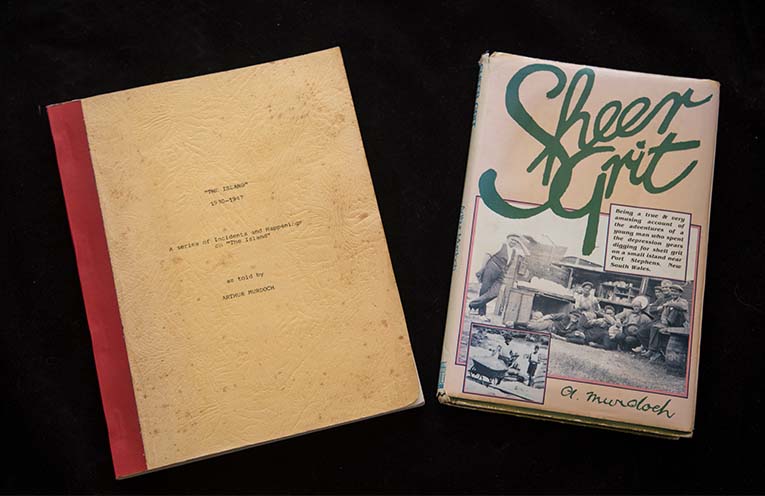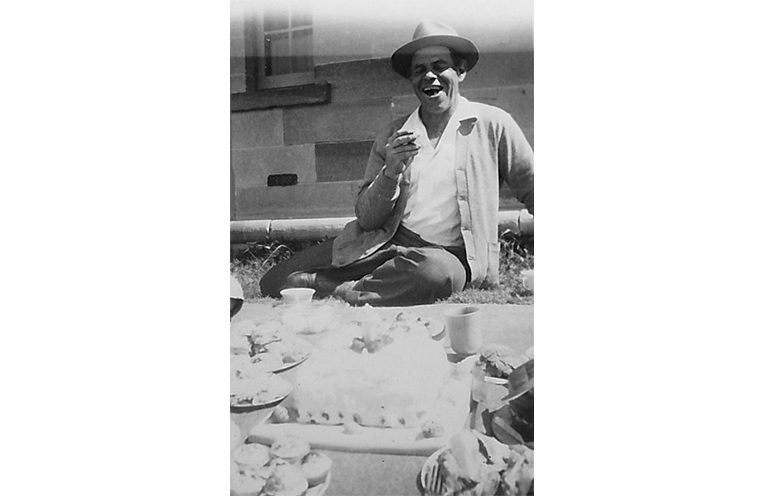
EARLY in 1944 with the war receding from Australia, Arthur Murdoch returned to Fingal Island.
By the end of the same year the island was deserted with no sign of any troop movement or wartime activity.
So it was that in 1945 Arthur returned to the island to resume digging shell grit.
Jack Lund was back in Nelson Bay and the pair were reunited, having first worked together in 1930.
Each weekend Arthur would drive from Newcastle to fill 100 bags with grit, which Harry shipped into the Nelson Bay wharf on his launch.
It was right back to where the project commenced in 1930 – without the “Coweambah”.
Everyone who ventured onto the island was made welcome by Arthur who hosted many fishermen both commercial and recreational.
It was an open house as Arthur loved company.
Commercial fisherman and lobsterman “Old Mouldy” Tarrant and his sons would spend time with Arthur in his hut during the lobster season and when Arthur left the island the Tarrant family moved in.
Arthur interacted with many light keepers over his period on the island from the time he first met the Headkeeper Jack Berryman.
He met Lightkeeper Parker when he first lived on the island.
Later, around October 1930, Murdoch relates that Reg Southwood and his family replaced the Berryman family as Headkeeper.
The Morgans left and the Solways arrived.
In September 1932 the Berrymans returned because of shutdowns and seniority.
In 1933 a new Lightkeeper McIntosh arrived with his family followed in 1934 by Eric Ralston.
Bill Presbury was a Relief keeper in the mid to late 1930s.
Others came and went.
Permanency was not a part of a lightkeeper’s life.
It was a continuous cycle of placement, replacement, promotion and relief work.
Just as Arthur would adjust to sharing the island with one keeper another would arrive.
Some were missed, others were not.
The session of digging and bagging shell grit in 1947 was Arthur’s last on the island.
Returning to the mainland he returned to the building industry.
I read with interest a letter to the Editor of the Port Stephens Examiner written by Arthur in 1989.
Arthur recalled the lighthouse school which was conducted in the feed shed at the back of the lighthouse.
“Hanging on the wall in my time was the frame printed ‘school library’.”
When visiting the then Head Keeper, Wilf Tulk, in the late 1950s, Arthur was told by the little daughter of the Assistant Keeper Hickey, that when she sent her correspondence lessons back to the school in Nelson Bay, she got a little note from her teacher.
The teacher who marked the papers, wrote on a note that she was always pleased to mark her lessons as, when she was a little girl, her first school was on the Outer Light.
Arthur Murdoch’s book “Sheer Grit”, first printed in 1984, again in 1999, then 2017, has become a legendary historical record, “great yarn” and an honest reflection of how life was for some, during tough early times.
Written in simple terms Arthur’s ability to relate a story, create a situation and to document a significant event in our short history is a genuine talent.
One that he may not have been aware of.
Nancy Calvert was instrumental in encouraging Arthur to sit down and write his story.
This he did in the Calvert’s house in Nelson Bay where he would sit in the corner of the kitchen, drink three big pots of tea and roll cigarettes.
At the end of the evening a pile of tobacco was under his seat on the floor.
Arthur dedicated his work to Nancy, who he secretly adored.
The Calverts, Ray and sister Deidre treasure the original “Sheer Grit” document.
It could not be printed as it was originally written as certain families were unhappy with Arthur’s disclosures.
Not suggesting that it was untrue, however let’s just say it could be embarrassing to some.
Murdoch voiced his opinion about the last lightkeepers in his book in 1984.
“Actually the whole tribe have passed the point of being an endangered species. They have had it; in a few short years they will become extinct.”
How right he was.
By John ‘Stinker’ CLARKE
